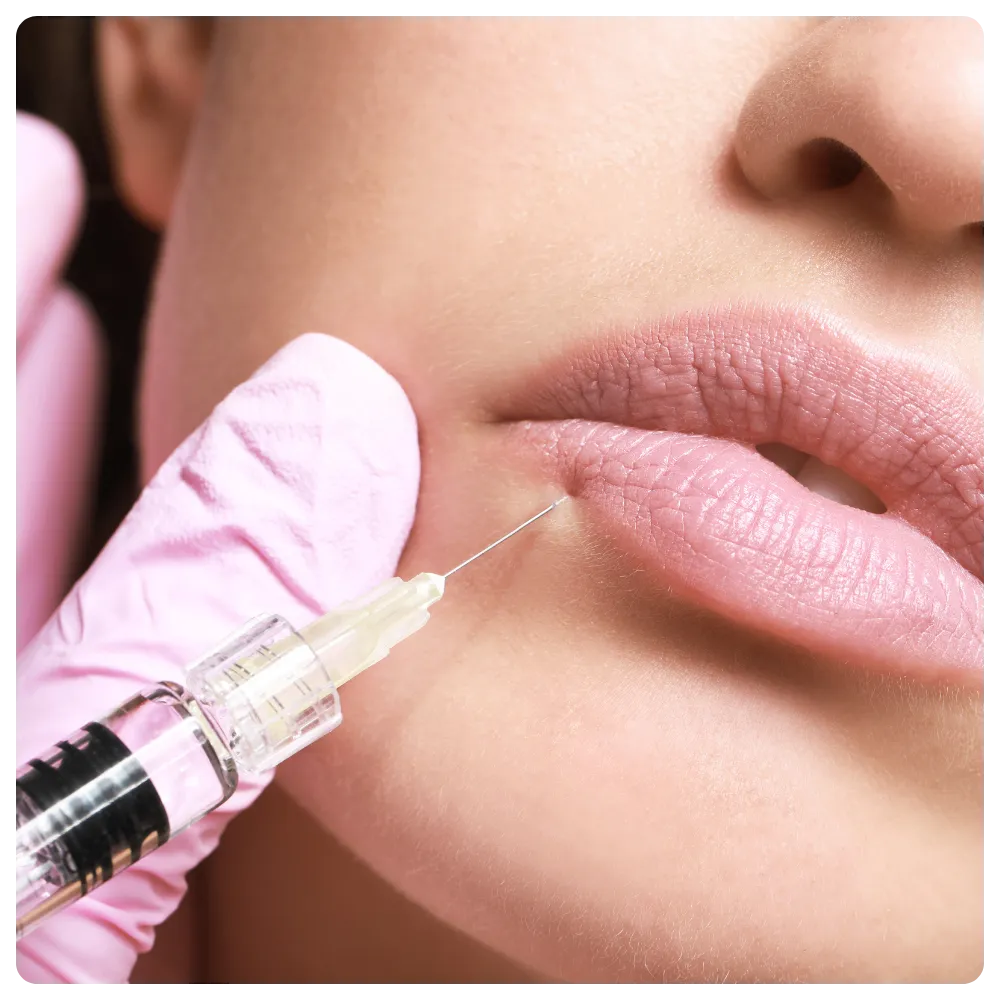Dermal Fillers

Restore lost volume, create natural-looking contours
Dermal fillers (such as Juvéderm, Restylane, RHA, Versa) are injectable treatments used to add volume, smooth out wrinkles, and enhance facial contours. They are made from various substances, including hyaluronic acid, which is naturally found in the skin.
Frequently Asked Questions (FAQ) about Dermal Fillers
How do dermal fillers work?
Dermal fillers work by injecting a gel-like substance beneath the skin. This adds volume to the area, filling in wrinkles, lines, and hollow areas, and enhancing facial features such as lips and cheeks.
What are the benefits of dermal filler treatments?
Dermal filler treatments offer several benefits, including:
Smoothing out wrinkles and fine lines
Adding volume to thin or aging lips
Enhancing the contours of the cheeks and jawline
Reducing the appearance of under-eye hollows
Facial balancing for a natural, symmetrical appearance
Providing a more youthful and refreshed appearance
Are dermal filler treatments safe?
Dermal filler treatments are generally considered safe when performed by a qualified healthcare provider. The substances used in fillers are designed to be compatible with the body. However, as with any medical procedure, there can be risks and potential side effects, so it's important to discuss these with your provider.
What conditions can dermal fillers treat?
Dermal fillers are commonly used for cosmetic purposes to treat various signs of aging and to enhance facial features. They can address:
Nasolabial folds (lines running from the nose to the mouth)
Marionette lines (lines running from the mouth to the chin)
Thin or uneven lips
Hollow or sunken cheeks
Under-eye hollows
Acne scars and other types of scars
Skin laxity and horizontal lines of the neck
How are dermal fillers administered?
Dermal fillers are administered through a series of small injections into the targeted areas of the face. The procedure is relatively quick, usually taking about 60 minutes, and involves minimal discomfort.
What should I expect during a dermal filler treatment?
During a dermal filler treatment, the area is numbed, and your healthcare provider will use a fine needle to inject the filler into the specific areas needing treatment. You might feel a slight pinch or pressure, but the procedure is generally well-tolerated. There may be some mild swelling or bruising afterward, but you can typically resume normal activities immediately.
How long does it take to see results from dermal fillers?
Results from dermal filler treatments are usually visible immediately after the procedure. The effects can last anywhere from 6 months to 2 years, depending on the type of filler used and the area treated.
Are dermal filler treatments covered by insurance?
Coverage for dermal filler treatments varies by insurance plan. Cosmetic treatments are usually not covered by insurance. It’s best to check with your insurance provider to understand your coverage.
Who is a good candidate for dermal fillers?
Good candidates for dermal fillers are individuals looking to reduce the appearance of wrinkles and fine lines, add volume to their lips or cheeks, or enhance their facial contours. A consultation with a qualified healthcare provider can help determine if dermal fillers are right for you.
